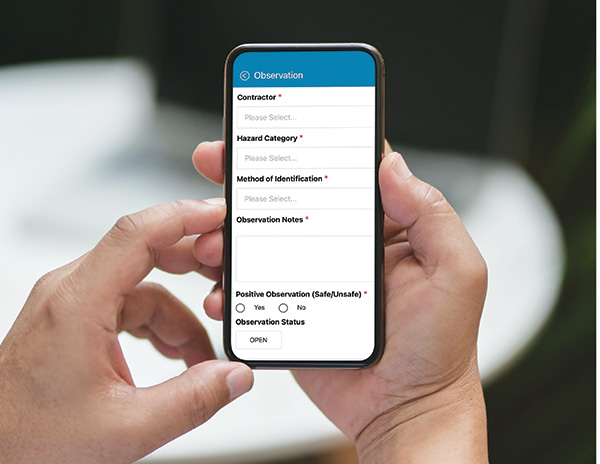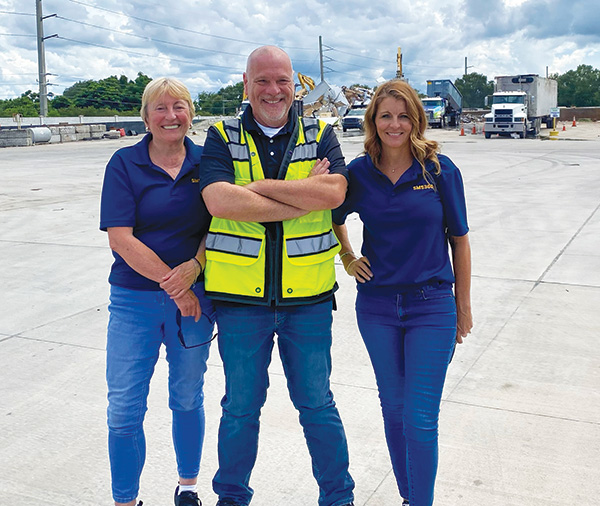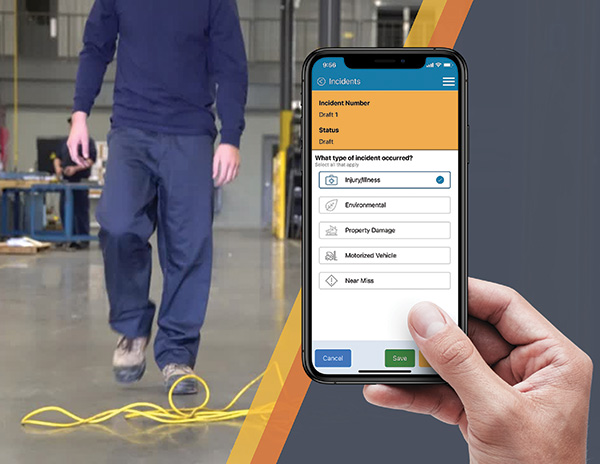Failing to make sure contractors follow proper safety protocols at transfer stations is a costly mistake often overlooked by safety managers. Luckily, new technologies can help.
By Caroline Sharpless
Transfer stations are one of the most dangerous areas in a waste operation. A big reason for this is that there are often drivers from many different third-party organizations coming in and out. Often, contractors are not professionally trained drivers, which means some are not as skilled at doing tasks like backing up cabs, but they might also be more likely to make minor mistakes like driving out with the gate open or leaving trailer doors open for people to get hit by. It is the transfer station’s responsibility to provide a safe workplace, so when a third-party driver gets injured at your transfer station, you are the party held liable.

From a safety perspective, third-party drivers each come from unique training backgrounds and likely possess different levels of motivation. You cannot bet on every contractor to be trained to your organization’s standards. You also cannot ensure that each driver has the self-motivation to follow safety protocols that are not enforced.
Identify the Problem: Use a Digital Safety Management System to Pinpoint Risk
With an online safety management system, safety managers can easily run reports based on data from post-incident forms to identify which contractors and locations are causing the most risk. Look for patterns to see if a specific contractor has multiple incidents. When this happens, it is easy to blame them, rather than your own organization, but at the end of the day, it will always be the transfer station who is held liable. If the same contractors are having repeat issues, the problem still is not them—it is your fault for not coming up with a customized solution to address them.
Similarly, an incident report could show you that one of your locations has far more incidents than another. There are dozens of reasons a specific location could be more unsafe than others, but it is difficult to pinpoint the exact cause without comparing the data to other locations. When looking deeper into the problematic location, you could find there are fewer signs on display, fewer PPE available, or fewer employees supervising.
Scour your incident report for additional patterns, such as the time of occurrence or the supervisor on the clock. It is possible that the supervisor working during that time is not observant or strict enough. A great solution would be to increase safety observations in that location.

Include Contractors in Regular Safety Observation Checks
Safety observations are a tried-and-true method of identifying risks before an accident occurs. Contractors should be required to adhere to all OSHA and DOT guidelines, as well as be subject to safety observations conducted by the transfer station supervisors.
Encourage supervisors to conduct regular and frequent safety observations with contractors, just as they would with employed drivers. Safety observations, when conducted digitally, are a key asset when practicing preventative safety. The checks, conducted by supervisors, ensure employees—and contractors—are following all the proper safety protocols. These are integral in identifying potential hazards before they cause any issues.
It is crucial that supervisors are tough in these observations. It is always better to address problems early—no matter how minor or insignificant they might appear—because those are the issues that will be flagged in inspections by regulatory agencies such as OSHA or the DOT. Strict observations produce key data points that management needs to create effective organizational changes.

Implement Changes to Address the Problems
Once you use data from both incident reports and safety observations to pinpoint your primary areas of risk, take action so the problems will be less likely to reoccur. Making locations safer could be as simple as increasing signage or improving training.
Neal Schechtman, Director of Safety and Compliance at EcoSouth Services, found that one of the biggest challenges in transfer stations is getting contractors to wear the proper PPE. How did Schechtman address this? He started requiring a representative at the scale house to remind all drivers who enter the premises to put on their PPE. “After initial contact with scale personnel, other site employees are on-hand to encourage all visitors to be compliant,” Schechtman said. “All EcoSouth employees are authorized to shut down a facility until all of our safety procedures are satisfied.”
He also makes extra PPE available to contractors in case they do not have it. The price of buying extra PPE is nothing compared to the cost of a catastrophic injury and the lawsuits that could accompany it.
Measure your Improvement
With a safety management system, you can track your improvement and see which solutions prove to be effective, and which are a waste of money. For example, if you find there were multiple head injuries occurring at a particular transfer station and one of your proposed solutions to increase hard hat usage was to add a safety check at the scale house, check back after a few months and see how that location is performing. Are there fewer incidents now than there were before? Are there fewer incidents at that location than at another one without the new safety check? Your safety program should always be growing and evolving. If after a significant amount of time passes, and you find a solution is not the right one, there is no shame in that. It is better to identify what is working and what is not working, then work out a new and improved solution.

At the end of the day, your organization is responsible for the people who enter your locations. It is up to you to ensure everyone is properly trained, adequately equipped, and able to return home safely. The more attention you pay to contractors, the less likely you will have to deal with the costly lawsuits and knock to your safety record that occurs when incidents happen. Do not forget that claims tend to be higher with contractors, so treat them the same as you would your own employees, and if anything, give them a little extra attention. | WA
Caroline Sharpless is Director of Marketing for SMS360, an EHS software platform that digitizes regulatory compliance and safety management. The team behind SMS360 has decades of experience in the waste industry and safety sphere. Companies across the globe use SMS360 to identify costly risk, operational inefficiencies, and compliance pitfalls. She can be reached at (203) 838-8877 or e-mail [email protected].
